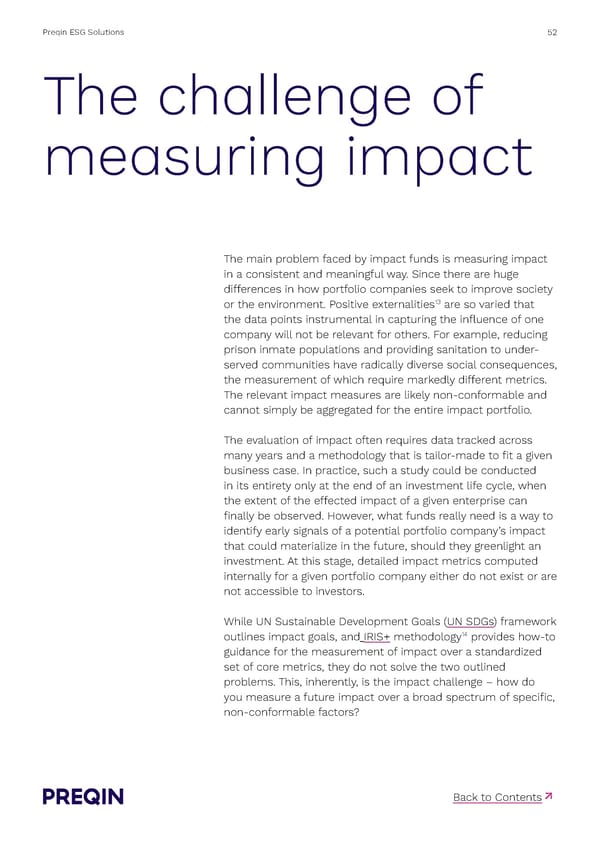Preqin ESG Solutions 52 The challenge of measuring impact The main problem faced by impact funds is measuring impact in a consistent and meaningful way. Since there are huge di昀昀erences in how portfolio companies seek to improve society 13 are so varied that or the environment. Positive externalities the data points instrumental in capturing the in昀氀uence of one company will not be relevant for others. For example, reducing prison inmate populations and providing sanitation to under- served communities have radically diverse social consequences, the measurement of which require markedly di昀昀erent metrics. The relevant impact measures are likely non-conformable and cannot simply be aggregated for the entire impact portfolio. The evaluation of impact often requires data tracked across many years and a methodology that is tailor-made to 昀椀t a given business case. In practice, such a study could be conducted in its entirety only at the end of an investment life cycle, when the extent of the e昀昀ected impact of a given enterprise can 昀椀nally be observed. However, what funds really need is a way to identify early signals of a potential portfolio company’s impact that could materialize in the future, should they greenlight an investment. At this stage, detailed impact metrics computed internally for a given portfolio company either do not exist or are not accessible to investors. While UN Sustainable Development Goals (UN SDGs) framework 14 outlines impact goals, and IRIS+ methodology provides how-to guidance for the measurement of impact over a standardized set of core metrics, they do not solve the two outlined problems. This, inherently, is the impact challenge – how do you measure a future impact over a broad spectrum of speci昀椀c, non-conformable factors? ↗ Back to Contents
 Preqin ESG Solutions Methodology Page 51 Page 53
Preqin ESG Solutions Methodology Page 51 Page 53